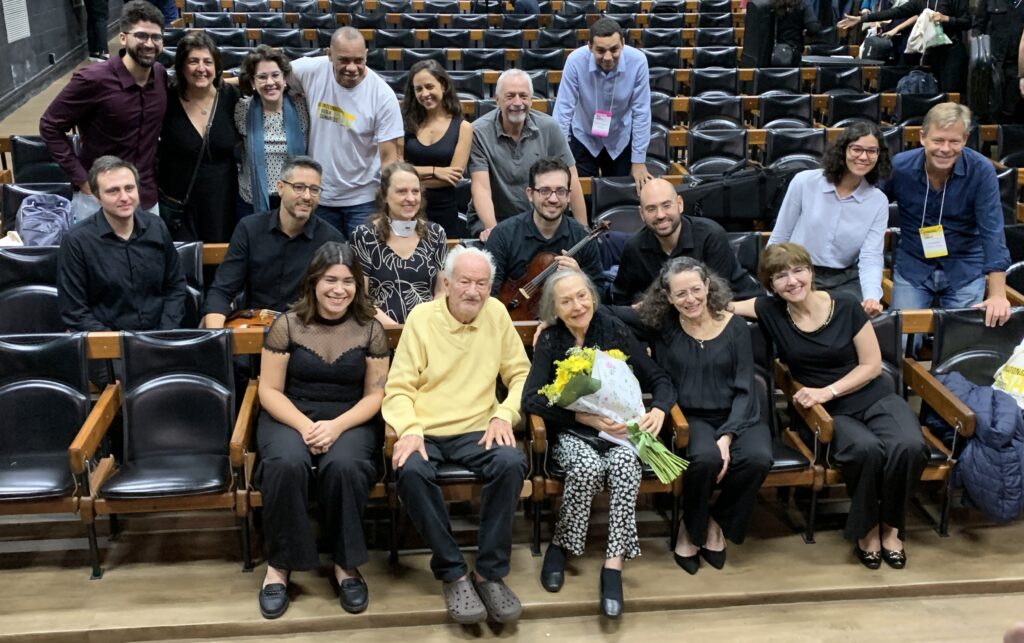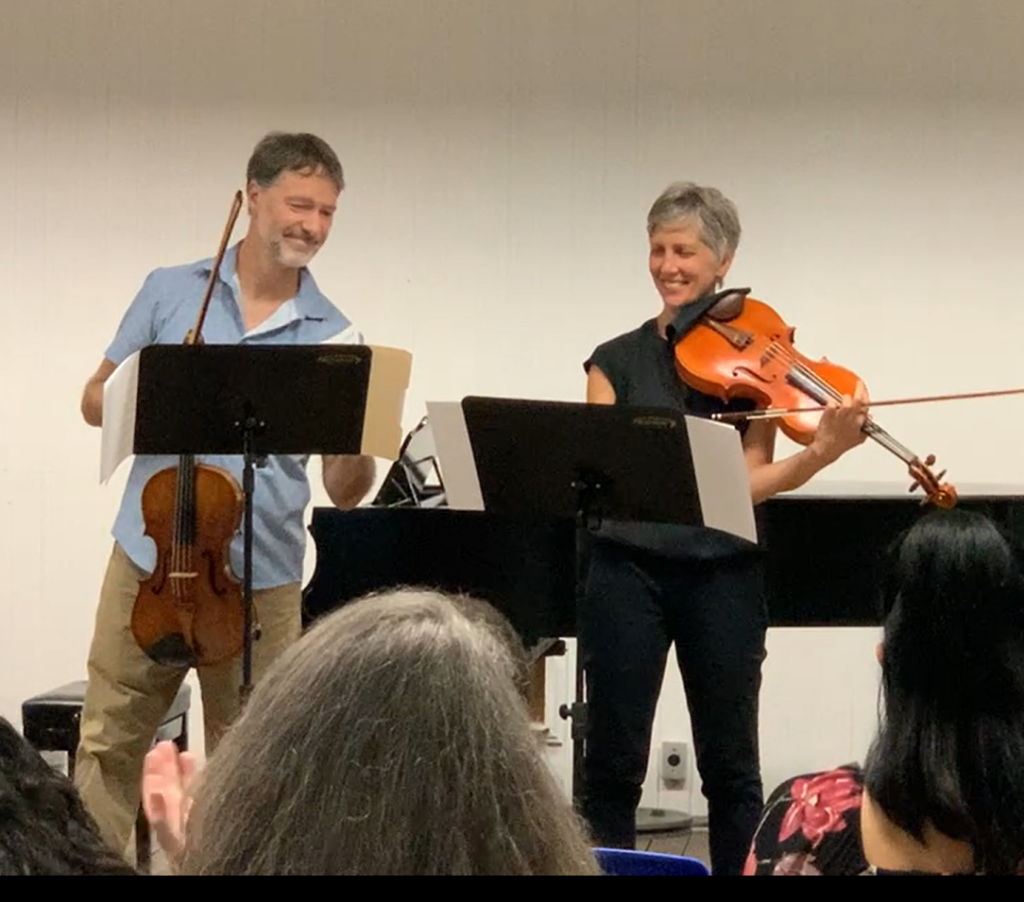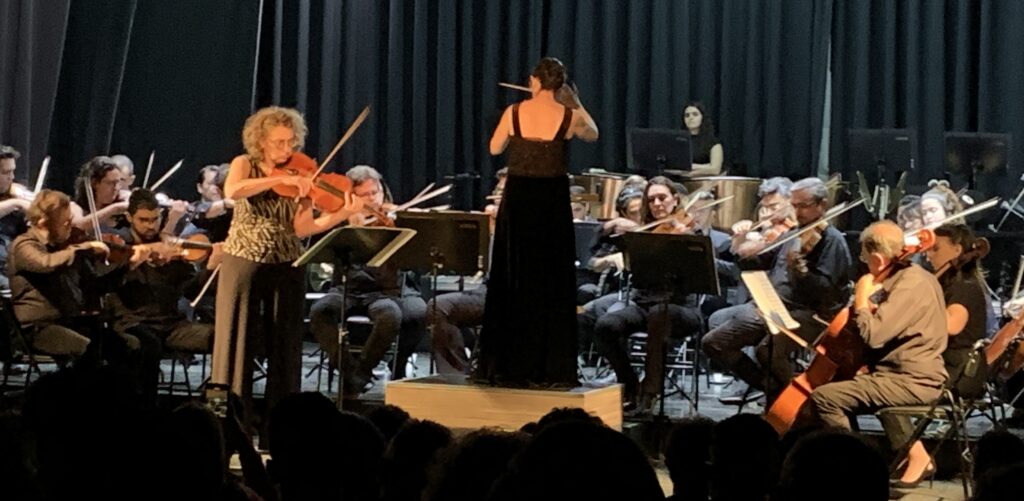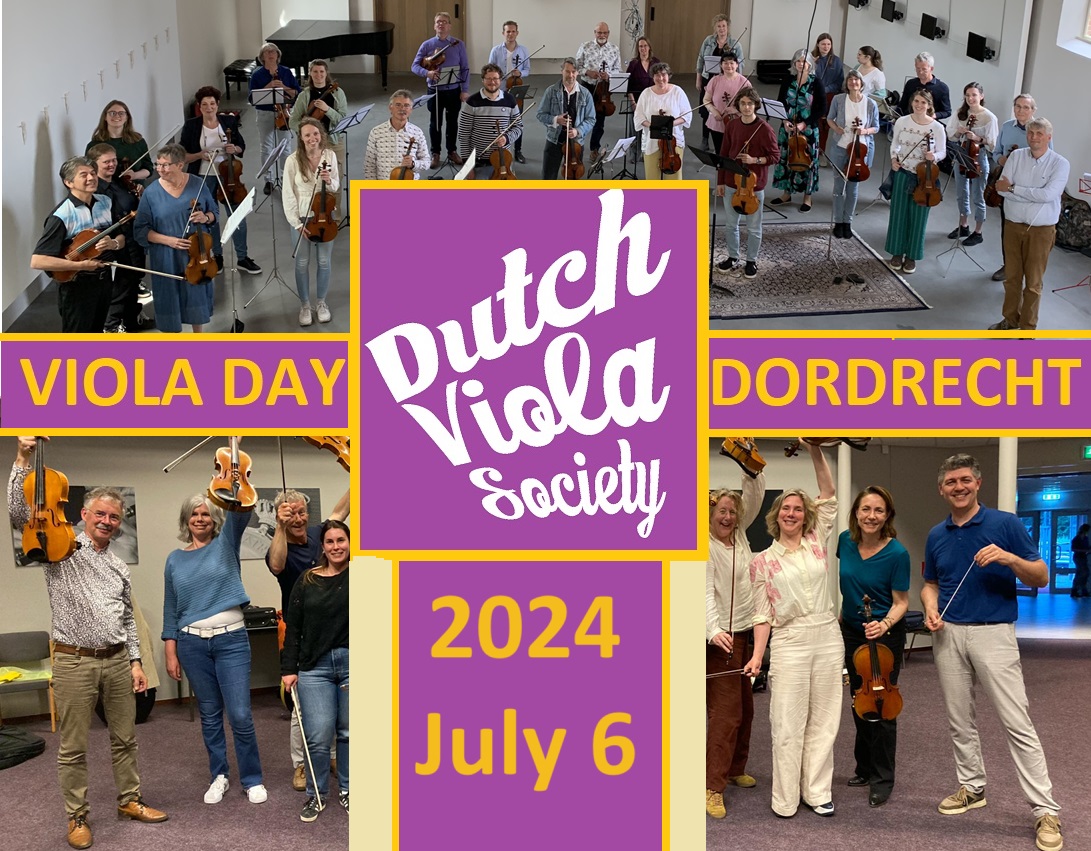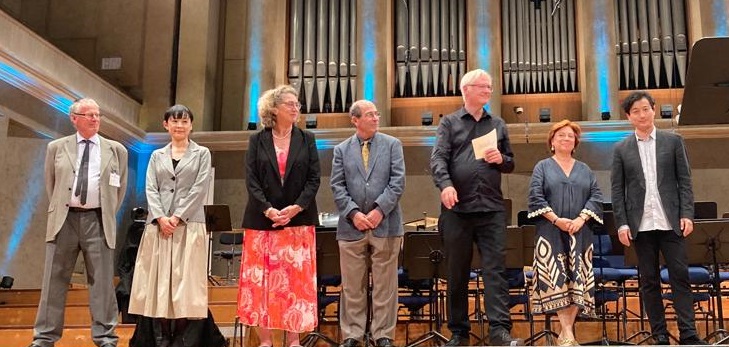door Roald van Os, HVVS
English version below! Follow this link.
Namens de Historical Violin & Viola Society (HVVS) doe ik graag kort verslag van een heel bijzonder project waar ik recent aan meedeed. In het verlengde van de dissertatie van Dr. Johannes Leertouwer hebben we 6 dagen onder zijn bezielende leiding mogen werken aan historisch geïnspireerde uitvoeringspraktijk zoals hij het zelf graag noemt. Dit keer stond de 2e symfonie en het vioolconcert van Schumann op het programma. Als solist mochten we met niemand minder dan Shunske Sato samenwerken: dat was op zichzelf al een feest en een fantastisch ervaring!
 We repeteerden in het Conservatorium van Amsterdam en in aanloop naar deze week kwam ik er achter dat de altvioolsectie waar ik deel van uit mocht maken almaar groter groeide tot uiteindelijk wel 10 altviolisten!
We repeteerden in het Conservatorium van Amsterdam en in aanloop naar deze week kwam ik er achter dat de altvioolsectie waar ik deel van uit mocht maken almaar groter groeide tot uiteindelijk wel 10 altviolisten!
Nu is een grote groep altviolen in een symfonieorkest dat 19e-eeuws repertoire speelt niet uitzonderlijk te noemen, wat de ervaring voor mij persoonlijk en ik denk ook voor de deelnemende studenten van conservatoria van o.a. Amsterdam, Den Haag en Utrecht bijzonder maakte was dat we allemaal op darmsnaren speelden. Ook de klassieke studenten die naast de studenten historische uitvoeringspraktijk deelnamen, hadden voor dit project hun eigen instrument voorzien van darmsnaren of hadden de beschikking over een ‘historisch’ instrument. Veel studenten speelden bovendien voor het eerst in hun leven op darmsnaren. Natuurlijk bijzonder leerzaam om een week lang met ander materiaal te werken als je dat niet gewend bent. Ook de keuze in strijkstokken was gericht op Schumann’s tijd. Ik gebruikte zelf bijv. een originele stok van rond 1830. Ook interessant vond ik de verhoudingen in aantallen tussen de violen 1 en 2 en de altviolen , celli en bassen, dat was 10-10-10-9-4. De orkestopstelling was ‘Duits’ zoals je die vandaag de dag bijv. nog bij de Wiener Philharmoniker ziet.
Het orkest was natuurlijk niet compleet zonder blazers en een paukenist op instrumenten uit de juiste periode: de (vroeg)romantiek. Ook de stemming verschilde nog van wat wij vandaag de dag gewend zijn: a=438hz
Als altviolen zaten we op een voor ons gebruikelijke plaats nu als het ware tussen de in de stereo geplaatste 1e en 2e violen en dat maakte dat we deze individuele stemmen goed konden horen. De 1e violen waren achter de celli nog prima voor ons waar te nemen. Wat ik zelf vooral opvallend vond en veel terug hoorde van collega’s binnen de altviolengroep: het orkestvolume is een stuk beter te verdragen dan wanneer je in een ‘modern’ geïnstrumenteerd symfonieorkest speelt. Daar kwam nog eens bij dat , althans in mijn beleving, het mengen met andere stemgroepen ook een stuk makkelijker tot stand kwam. Bijv. in passages waar houtblazers zoals houten fluiten en altviolen melodielijnen deelden dat mooi in bereik van volume en kleur samenviel.
Johannes vroeg ons als strijkers een aantal zaken met extra veel bewustzijn te benaderen en toe te passen; denk aan portamento, vibrato alleen op specifieke momenten, snel opvolgende tempowisselingen veel gebruik van de bovenste helft van de stok.
Concluderend kan ik wel zeggen dat we veel geleerd hebben van grondig geïnformeerde Vroegromantische uitvoeringspraktijk, waarbij we nieuwe tools hebben leren kennen en toepassen waar we een week lang mee hebben kunnen experimenteren, kennis hebben genomen aan de hand van enkele voorbeelden van de context en op welke wijze deze van invloed was op de componist Schumann zoals o.a. Mozart, Beethoven en Mendelssohn. Samen met Shunske Sato heeft Johannes Leertouwer mij, en ik geloof ook vele andere studenten, geïnspireerd verder te zoeken naar de mogelijkheden van praktisch onderzoek in historischere uitvoeringspraktijk.
Roald van Os, masterstudent Historische Altviool, Utrechts Conservatorium (HKU)
~~~~~~~~~~~~~~~~~~~~~~~~~~~~~~
English Version:
HVVS report: Schumann Project with Johannes Leertouwer
On behalf of the Historical Violin & Viola Society (HVVS), I would like to briefly report on a very special project I recently participated in. In line with Dr. Johannes Leertouwer’s dissertation, we were able to work for 6 days under his inspiring leadership on historically inspired performance practice, as he likes to call it. This time, Schumann’s 2nd symphony and violin concerto were on the program. We had the privilege to work with none other than Shunske Sato as our soloist: that in itself was a party and a fantastic experience!
We rehearsed at the Amsterdam Conservatory and in the run-up to this week I discovered that the viola section I was invited to be part of was growing steadily, eventually totaling 10 viola players!
Now a large group of violas in a symphony orchestra playing 19th century repertoire is not exceptional, what made the experience special for me personally and I think also for the participating students from conservatories in Amsterdam, The Hague and Utrecht, among others, was that we all played on gut strings. The classical students who participated alongside the students of historical performance practice had also fitted their own instrument with gut strings for this project or had a ‘historical’ instrument at their disposal. Many students also played on gut strings for the first time in their lives. Of course it was particularly instructive to work with different material for a week if you are not used to it. The choice of bows was also based on Schumann’s time. For example, I myself used an original bow from around 1830. I also found the ratios in numbers between violins 1 and 2 and the violas, cellos and basses interesting, which was 10-10-10-9-4. The orchestral setup was ‘German’ as you can still see today, for example, at the Wiener Philharmoniker.
The orchestra was of course not complete without wind instruments and a timpanist on instruments from the right period: the (early) romantic period. The tuning also differed from what we are used to today: a=438hz
As viola group we sat in a place that was customary for us, now as it were between the 1st and 2nd violins placed in the stereo, and that meant that we could hear these individual voices well. The 1st violins were still perfectly audible to us behind the cellos. What I found particularly striking and heard a lot from colleagues within the viola group: the orchestral volume is a lot more bearable than when you play in a ‘modern’ instrumented symphony orchestra. In addition, at least in my experience, mixing with other voice groups was also a lot easier. For example: in passages where woodwinds such as wooden flutes and violas shared melody lines that nicely coincided in range of volume and color.
Johannes asked us as string players to approach and apply a number of things with extra awareness; think of portamento, vibrato only at specific moments, rapid successive tempo changes, extensive use of the upper half of the bow.
In conclusion, I can say that we learned a lot from thoroughly informed Early Romantic performance practice, in which we got to know and apply new tools that we were able to experiment with for a week, learned about the context based on a few examples and how it influenced the composer Schumann, as did Mozart, Beethoven and Mendelssohn. Together with Shunske Sato, Johannes Leertouwer inspired me, and I believe many other students, to continue searching for the possibilities of practical research in more historical performance practice.
Roald van Os, master student Historical Viola, Utrechts Conservatorium (HKU)

